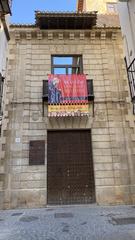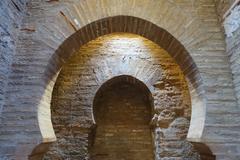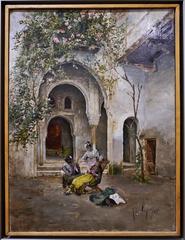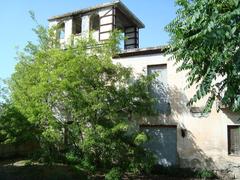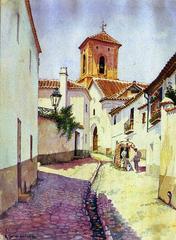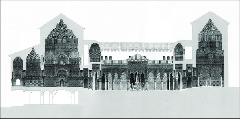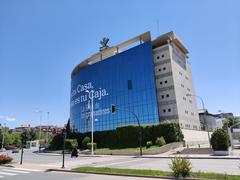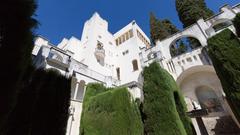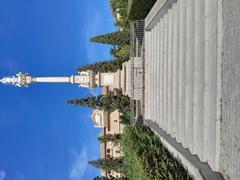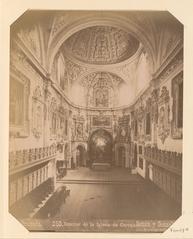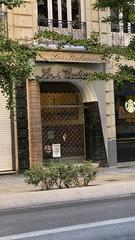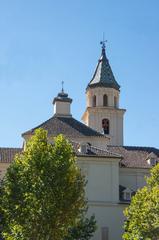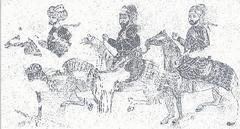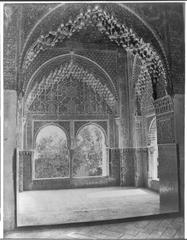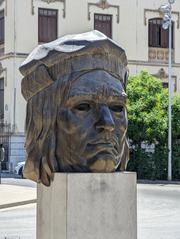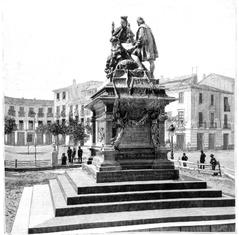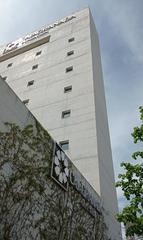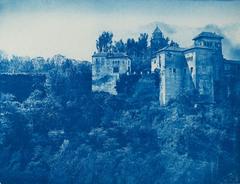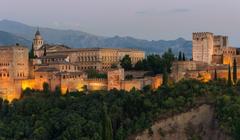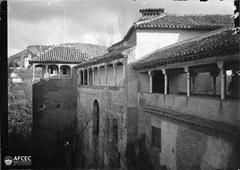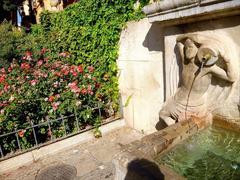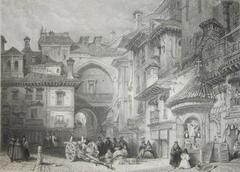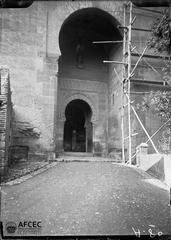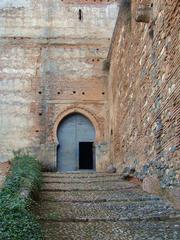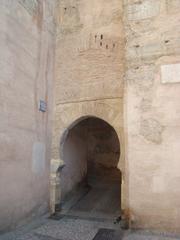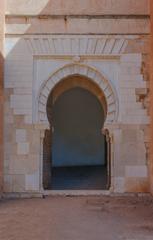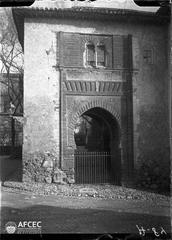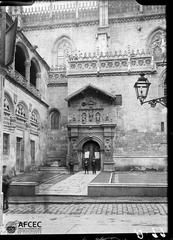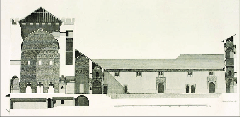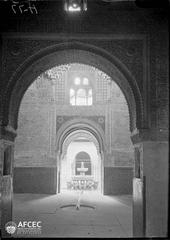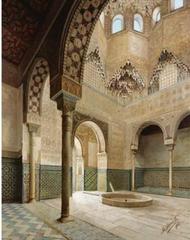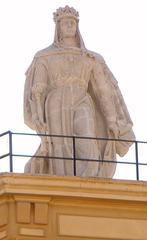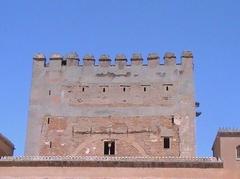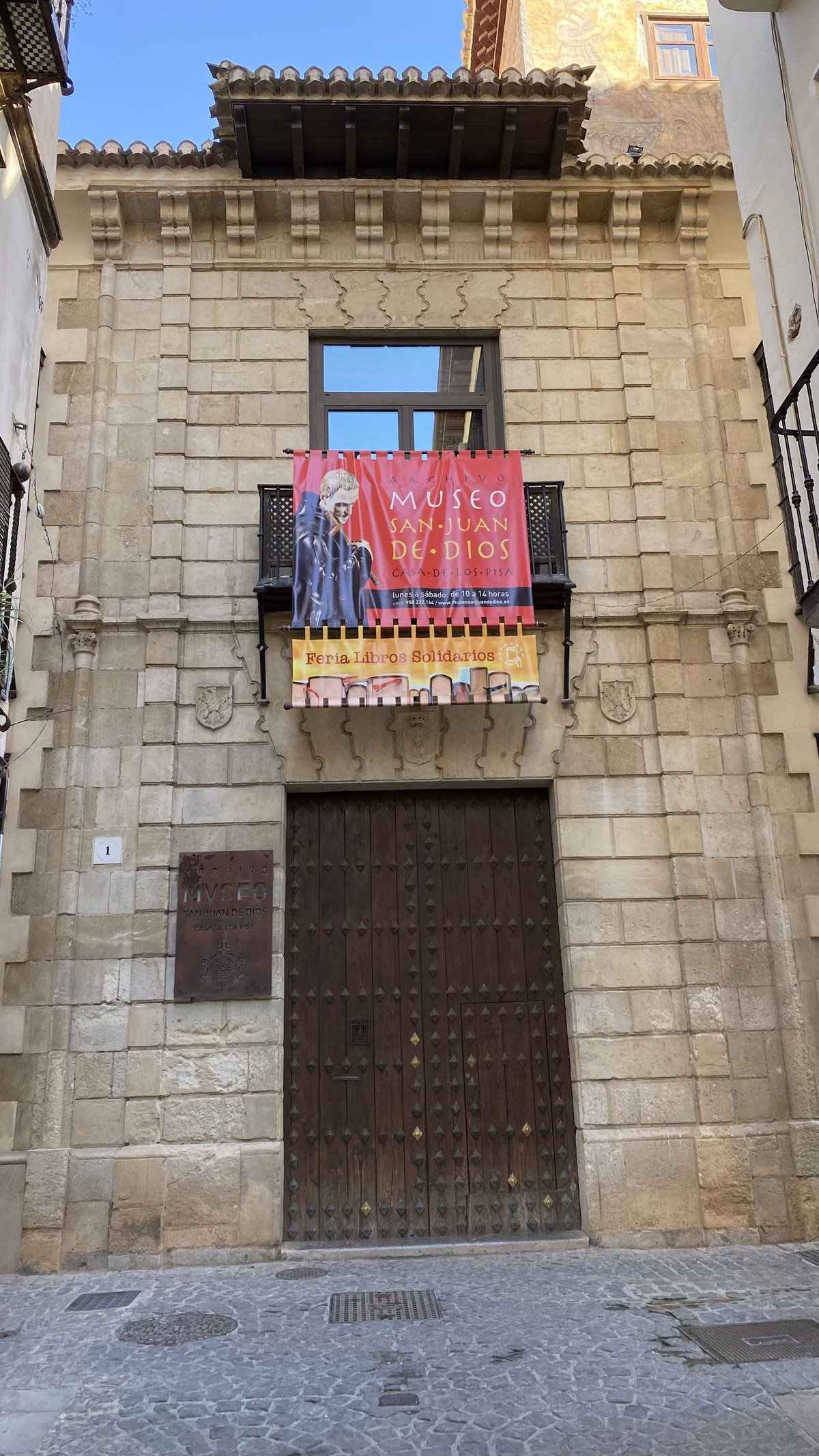
Casa de los Pisa: Visiting Hours, Tickets, and Historical Significance in Granada, Spain
Date: 14/06/2025
Introduction
Casa de los Pisa, situated at the threshold of Granada’s Albaicín district near Plaza Nueva, is a profound symbol of the city’s rich historical and cultural heritage. This late 15th-century noble residence, commissioned after the Catholic Monarchs’ conquest of Granada in 1492, is a key testament to the city’s transition from Nasrid to Castilian rule. Its unique blend of Mudéjar and Renaissance architectural elements, including a striking central courtyard with authentic Moorish tiles, underscores Granada’s fusion of Islamic and Christian traditions.
Casa de los Pisa is intimately linked to Saint John of God, founder of the Hospitaller Order. He spent his last days here in 1550, which transformed the residence into a revered pilgrimage site. Today, it operates as a museum dedicated to preserving the saint’s legacy, the Order’s humanitarian mission, and Granada’s layered past. The museum houses an impressive range of religious art, manuscripts, and artifacts spanning more than four centuries, making it a must-visit for history enthusiasts, art lovers, and cultural travelers.
Note: As of June 2025, Casa de los Pisa is temporarily closed for renovations. For updates on reopening, visiting hours, and tickets, consult the official Granada Tourism website or explore available virtual tours (Granada Tourism, andalucia.com, GranadaDigital).
Contents
- Historical Background and Legacy
- Architectural and Artistic Features
- Cultural and Religious Significance
- Museum Collections and Highlights
- Visitor Information
- Frequently Asked Questions (FAQ)
- Planning Your Visit
- Sources and Further Reading
Historical Background and Legacy
Origins and Construction
Casa de los Pisa was commissioned by the noble Pisa family after 1492, symbolizing Granada’s shift from Islamic to Christian rule (Granada Tourism). The residence’s architecture harmonizes Mudéjar and Renaissance styles, featuring a central patio, intricate woodwork, and original 14th-century Moorish tiles that connect to the city’s Islamic legacy.
Saint John of God and Its Transformation
Saint John of God, founder of the Hospitaller Order dedicated to care for the sick and poor, died in Casa de los Pisa on March 8, 1550. The Pisa family’s act of sheltering him during his final illness transformed the house into a revered pilgrimage destination. The room where he died remains preserved as a chapel and is a focal point for visitors.
From Noble Residence to Museum
After the Pisa family’s lineage ended, the Hospitaller Order acquired the residence, converting it into a museum and memorial to Saint John of God. Today, the museum preserves artifacts and documents related to the saint, the Order, and Granada’s post-Reconquista history, thus chronicling over 400 years of religious and social evolution.
Preservation and Modern Legacy
Casa de los Pisa is currently undergoing renovations (June 2025) to ensure its preservation. Conservation efforts focus on maintaining its architectural authenticity and safeguarding its invaluable collections for future generations (Granada Tourism).
Architectural and Artistic Features
Layout and Context
Constructed near Plaza Nueva and the Albaicín, Casa de los Pisa’s location reflects its historical importance (andalucia.com). The layout centers on a Moorish-style patio, with arcaded galleries, geometric tilework, and a fountain that doubles as a climatic regulator.
Key Features
- Patio: The central patio merges Moorish and Renaissance aesthetics, serving as a visual and environmental centerpiece.
- Chapel: The richly decorated chapel, where Saint John of God died, features Baroque altarpieces and devotional artworks (en.granada.info).
- Interior Rooms: Exhibition spaces display original Mudéjar coffered ceilings, Gothic arches, azulejos, and period furnishings, immersing visitors in Granada’s noble domestic life.
Artistic Collections
The museum’s highlights include:
- Moorish Tiles: Authentic fragments from the 14th century.
- Sculptures: Baroque works by Diego de Mora and others.
- Paintings: Flemish triptychs by Joos van Cleve and pieces by Alonso Cano, Alonso Berruguete, and Martínez Montañés (spain.info).
- Relics and Documents: Saint John of God’s personal items, royal decrees, and papal bulls.
- Decorative Arts: Ivory carvings, porcelain, and textiles that illustrate both devotional and domestic life.
Cultural and Religious Significance
Noble Heritage
The mansion was built by Juan Rodríguez de Pisa, a “cristiano nuevo” merchant from Almagro, whose family rose to prominence as “caballeros veinticuatro”—noble council members entrusted with city governance (GranadaDigital). The façade and surviving Gothic elements reflect this status.
The Order of San Juan de Dios
Casa de los Pisa became a focal point for the Hospitaller Order, which has played a crucial role in humanitarian and medical care across Spain and beyond. The museum’s archives and collections document the Order’s spiritual, medical, and social contributions.
Living Legacy
The Casa continues to host events such as the “Feria de libros solidarios,” supporting the Order’s modern charitable projects. Temporary exhibitions and collaborations with local art schools ensure its relevance as a dynamic cultural venue.
Pilgrimage and Local Devotion
Saint John of God’s relics attract pilgrims and reinforce the Casa’s role in Granada’s spiritual life, particularly during feast days and religious celebrations.
Museum Collections and Highlights
Thematic Exhibition Rooms
- Sala de la Vida de San Juan de Dios: Chronicles the saint’s life through manuscripts, relics, and personal effects.
- Sala de la Orden Hospitalaria: Explores the Hospitaller Order’s evolution with historical documents.
- Sala de Arte Sacro: Displays sacred art and liturgical objects.
- Sala de Medicina y Farmacia: Features medical instruments and pharmacy jars.
- Sala de la Casa de los Pisa: Showcases original family furnishings and Renaissance décor.
Collection Highlights
- Relics of Saint John of God: Clothing fragments, his cane, and handwritten notes.
- Religious Art: Works by Alonso Cano’s circle and Flemish painters.
- Historical Documents: Papal bulls, royal decrees, and letters.
- Medical Artifacts: Instruments and texts illustrating the Order’s pioneering healthcare.
- Decorative Arts: Renaissance ceramics, silverware, and textiles.
Visitor Information
Location and Accessibility
- Address: Calle de la Convalecencia 1, Granada, Spain
- Public Transport: Accessible by city buses C31, C32, and C34 (Granada Info).
- Nearby Landmarks: Albaicín, Granada Cathedral, Royal Chapel.
Visiting Hours (as of June 2025)
- Currently: Temporarily closed for renovations. Check the official website for reopening updates.
Tickets and Admission
- Ticket prices and group rates will be published upon reopening.
- Tickets are usually sold onsite; group and educational bookings are available in advance.
Accessibility
- Efforts are made to accommodate visitors with disabilities, but historical features may present challenges. Contact ahead for specific needs.
Guided Tours
- Guided tours (Spanish, English, other languages by request) are available by prior arrangement.
- Recommended for deeper historical and artistic insights.
Special Events and Exhibitions
- The Casa often hosts temporary exhibitions and cultural events. Information is posted on official channels.
Photography
- Allowed in most areas, except where restricted (especially rooms with relics and sensitive documents). Always ask staff for guidance.
Frequently Asked Questions (FAQ)
Q: What are the current visiting hours?
A: The museum is closed for renovations (June 2025). Check the official website for updates.
Q: How can I purchase tickets?
A: Tickets are sold onsite; advance booking is recommended for groups, especially after reopening.
Q: Is the museum accessible for wheelchair users?
A: Some areas are accessible; however, the historic layout may pose challenges. Contact the museum prior to your visit.
Q: Are guided tours available in English?
A: Yes, upon request and with advance booking.
Q: Can I combine my visit with other attractions?
A: Absolutely—Casa de los Pisa is near the Albaicín, Cathedral, and Royal Chapel.
Planning Your Visit
- Confirm opening status and hours via the official Granada Tourism website.
- Book guided tours in advance for a comprehensive experience.
- Combine your visit with nearby sites for a full day immersed in Granada’s cultural and religious heritage.
- Explore virtually if onsite visits are temporarily unavailable; online galleries and virtual tours are available.
Contact Information:
- Phone: +34 958 222 144
- Website: Museo San Juan de Dios, Granada - Casa de los Pisa
Summary and Final Tips
Casa de los Pisa stands as a cultural beacon illuminating Granada’s complex history, artistic achievement, and tradition of humanitarian service. From its architectural synthesis to its revered association with Saint John of God, the museum reveals the city’s evolution and enduring values. While currently closed for renovations, Casa de los Pisa is poised to offer an enriched experience upon reopening.
Visitor Tips:
- Always verify current visiting hours and ticketing information before planning your visit.
- Take advantage of guided tours for deeper understanding.
- Enhance your experience by exploring nearby historical sites.
- Download the Audiala app for guided audio tours and up-to-date cultural insights.
Sources and Further Reading
- Granada Tourism – Casa de los Pisa Museum
- Casa de los Pisa – andalucia.com
- GranadaDigital – Casa de los Pisa Archive Museum
- Museo San Juan de Dios, Granada – Casa de los Pisa
- rinconesdegranada.com
- spain.info – Museum San Juan de Dios Casa de Pisa
